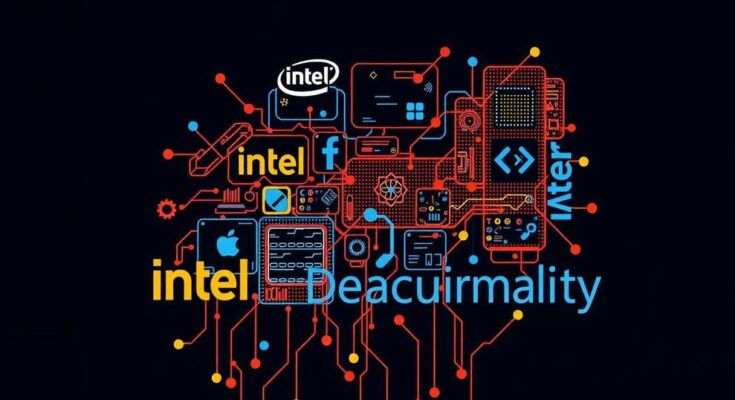Intel CEO Pat Gelsinger has retired effective December 1, 2024, amid struggles to compete with TSMC and Samsung in the semiconductor market. CFO David Zinsner and CEO of Intel Products Michelle Johnston Holthaus have been appointed interim co-CEOs. Intel has recently faced challenges in demand and delays in factory construction, despite significant investments to boost production capabilities.
In a significant leadership shift, Intel Corporation has announced the retirement of its CEO, Pat Gelsinger, effective December 1, 2024. Gelsinger’s tenure was marked by attempts to reinvigorate the company amid fiercely competitive market pressures from Asian giants such as TSMC and Samsung, which have taken the lead in the semiconductor sector. Given the current challenges, the board has appointed CFO David Zinsner and Intel Products CEO Michelle Johnston Holthaus as interim co-CEOs while the search for a permanent leader commences.
Gelsinger, who began his career at Intel in 1979, returned as CEO in 2021 during a pivotal phase for the company. Despite substantial investments in semiconductor manufacturing and significant government partnerships, including a recent $7.9 billion subsidy from the Biden administration, Intel has struggled to keep pace with competitors. The company has also been compelled to delay the establishment of two major chip factories in Germany and Poland, citing lower-than-expected demand. In the wake of these developments, Gelsinger remarked on the honor of leading the company, while recognizing the difficulties faced over the past year.
As Intel navigates this transitional period, it aims to restore investor confidence and adapt to shifting market dynamics, which includes recent challenges from emerging players in the AI chip market, notably Nvidia. The interim leadership team, comprising Zinsner and Holthaus, both bring substantial experience and a commitment to addressing the company’s pressing issues moving forward.
The departure of Gelsinger marks a crucial moment for Intel as it endeavors to regain its position in the semiconductor industry. As such, industry observers will watch closely for the strategic decisions made by the interim leadership in the coming months, especially as the company grapples with supply challenges and evolving market needs.
Intel, a key player in the semiconductor industry, faces intense competition from companies like TSMC and Samsung, which have outpaced it in recent years. This shift in market leadership has prompted Intel to invest heavily in its manufacturing capabilities, including significant government support. The need for reform came sharply into focus under CEO Pat Gelsinger’s leadership, who had returned to the company during a critical time marked by technological advancements and evolving market demands. The decision to retire Gelsinger signals a transformative period for Intel as it seeks new direction and revitalization.
The retirement of Pat Gelsinger as CEO of Intel marks a pivotal change for the company as it confronts competitive pressures and operational challenges. Appointing an interim leadership team indicates Intel’s recognition of the need for immediate action in revitalizing its strategies. Facing delays in key projects and market shifts, the company must restore investor confidence and adapt to the rapidly evolving semiconductor landscape. The choice of a permanent successor will be critical to determine Intel’s path forward.
Original Source: jordantimes.com




